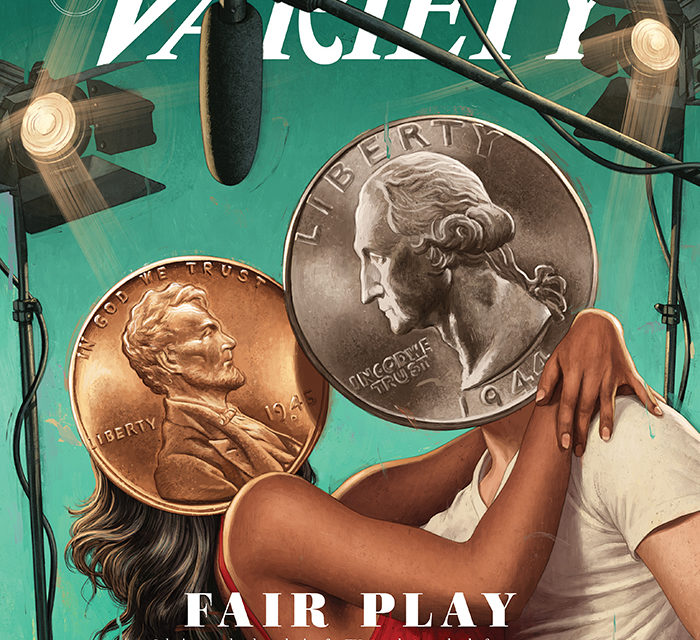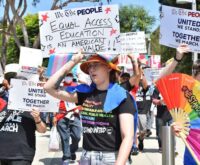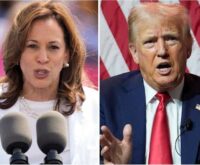By Daniel Holloway, Senior TV Reporter
Variety, August 22, 2017 —
July 31 was Black Women’s Equal Pay Day. Actress Yvette Nicole Brown marked the occasion — which recognizes the additional seven months that a black woman, on average, must work to make as much money as a white man does in a year — by swatting down Twitter trolls who claimed calling out the inequity was unnecessary.
“I found out that as a series regular I was making just a smidge over what a white man was making as a GUEST star,” Brown wrote, sharing a disturbing discovery she made at one point in her career. “Dude was just visiting.”
Pay in Hollywood is a reliable topic of gossip but has seldom been talked about so openly. That’s changing. The earnings gap that separates female and minority performers from their often better-compensated white male counterparts has recently catalyzed public discussion — and public negotiations. As performers and their agents drag pay inequality into the light, studios and networks face increased pressure to make it the issue central to their diversity and inclusion efforts.

Emmy Rossum now earns the same pay as her co-star, William H. Macy, who supported her push for pay parity.
In December, “Shameless” actress Emmy Rossum negotiated a deal that would pay her the same amount that co-star William H. Macy — who had just renewed his contract and always made more than Rossum — would earn for the show’s eighth season. But Rossum’s was a rare victory. On “The Big Bang Theory,” Melissa Rauch and Mayim Bialik sought to match the $1 million per episode that producer Warner Bros. agreed to pay each of its mostly male co-stars for the next two seasons but fell short, with $500,000 deals finalized in April. Then last month, CBS allowed Daniel Dae Kim and Grace Park, both of Korean heritage, to walk away from “Hawaii Five-0” rather than match their pay to that of white male stars Alex O’Loughlin and Scott Caan.
Brown refuses to identify the show on which she was paid the same as a white male guest star, but she’s clear it wasn’t her new series, ABC’s “The Mayor,” or her first as a regular cast member, NBC’s “Community.”
She recalls sitting in a hair-and-makeup trailer, joking with her fellow actors about pay, when a guest star “just blurted out” what he was making for the episode.
“I was like, ‘That’s five dollars less than me,’” Brown tells Variety. “It’s not like this was Tom Cruise. If Tom Cruise comes, back up the Brinks truck. This was a journeyman actor. He wasn’t performing a series-regular role.” Brown soon realized she was making far less than the other series regulars on the show, “because no one else in the room was shocked” by what the guest star earned.
“I’ve been a series regular now for eight years on network television, and I’m making what a guy coming for a week is making,” Brown says. “And it’s because I’m a black woman.”

Salary Survey 2017: A Look at Who Makes What in TV
See Who Makes What:
TV Salaries Revealed, From Ellen DeGeneres to Katy Perry and The Rock
For female actors and especially actors of color, pay is depressed by lack of demand. There just aren’t as many roles as there are for white men — and with fewer casting opportunities, nonwhite and non-male actors seldom see increases to the quotes that their agents demand from studios.
According to GLAAD’s 2016 “Where We Are on TV” report, 44% of series-regular primetime broadcast roles last season were female (women make up 51% of the U.S. population). Only 20% of series regulars on broadcast television were black; of those, only 38% were black women.
“Your quote goes up when you book pilots,” Brown says. “Minorities don’t have as many opportunities to book pilots. I’ve been in the running for four pilots in my life, and I’ve booked three of them. There are some white actresses who go out for four pilots on a Tuesday morning.”
For women and actors of color, this year’s pilot season offered little change. A May Variety analysis revealed that of the 46 lead roles on new broadcast series ordered for the upcoming season, only 20% were cast with nonwhite or Hispanic actors. Just 33% of all lead roles were female. For the second year in a row, CBS ordered no new show with a female lead or co-lead for fall.

JEREMY ENECIO FOR VARIETY
“We price people based on their quotes, based on their role,” says Gary Newman, co-CEO of Fox Television Group. “We’re committed to paying people on those criteria, and we’ll continue to do so.”
But Newman concedes that minority actors are disadvantaged by the scarcity of opportunities to raise those quotes.
“I think that’s a legitimate issue,” he says. “I think it requires greater sensitivity than people may have had in the past.”
NBC Entertainment chairman Bob Greenblatt says his studio division, Universal Television, is conscious of pay equality when structuring deals.
“Whether they’re overall deals or acting-fee deals or producer deals, yes,” Greenblatt says. “At the same time, you can’t ignore experience, and you can’t just say that because someone is of a specific diversity, they’re going to make 10 times more. You have to take all that into consideration.”
Greenblatt emphasizes the diversity on his executive team — noting that he is gay and that several top-level NBC Entertainment executives are LGBTQ, female or racial or ethnic minorities. He claims that NBC has made an effort to address pay inequality within its ranks, trying to ensure that the salaries of female executives are on par with those of their male peers.
“Everything doesn’t get reset at the same time, but we’re very conscious of it,” he says.
The issue isn’t just an American problem: In the U.K., the BBC has promised to close its gender pay gap by 2020 following public outcry over the revelation that more than two-thirds of its top earners are male.
Despite such efforts, women remain stubbornly underrepresented on-screen. What has changed, though, is that female actors are now speaking up.
“I’ve passed on jobs because I was going to get paid the same as somebody who had fewer lines than me and was male,” says Eliza Coupe, who stars in “Future Man,” an upcoming Hulu sci-fi series. “Actually two projects.”
Coupe turned down those offers, which preceded “Future Man,” with gusto. In each case, her representatives made clear to producers exactly why she was rejecting them.
But it’s only in the years since Coupe’s breakout on ABC comedy “Happy Endings,” and her emergence as a sought-after performer during the crush of pilot-season casting, that she has been able to comfortably say no to such situations.
“In the past, I would have been like, ‘Eh, f— it.’” Coupe says. “Because you say, ‘Eh, f— it,’ to a lot of things when you’re starting out.”
“Saturday Night Live” alum Nasim Pedrad, who’s joining TBS’ “People of Earth” in its second season, isn’t aware of having ever made or been offered less than that of a male equal. But she takes precautions.
“I ask questions, and I make sure that I’m being compensated in a way that’s fair and comparable to what my male counterparts are making,” she says. “Where the industry was when I started in 2003 and where we are now — I still feel like we’re at the 10-yard line and not where we should be. But the fact that we’re even having a dialogue about it is promising. I don’t think people were talking about it 10 years ago.”
Susan Kelechi Watson of NBC’s “This Is Us” also has never known herself to be paid less than a male co-star. But she realizes that may have happened at some point in her career. “The thing is finding out, because otherwise you just know what you know,” she says. “As a black person and as a woman, I’m seeing a lot about it, and I’m glad that this is becoming a conversation.”
The imbalance isn’t isolated to broadcast — the massive amounts of money being spent by streaming services on original programming don’t translate to equal pay. Speaking at the Rockefeller Foundation last year, “House of Cards” star Robin Wright told an audience that she had secured a raise that would put her on an even plane with Kevin Spacey, her co-star in the Sony-produced Netflix drama. Months later, she told United Airlines’ inflight magazine Rhapsody that she had not, in fact, achieved parity with Spacey, saying, “I really don’t like being duped.”
Amy Schumer couldn’t have been hotter as a personality when she set a deal last year to star in a comedy special for Netflix, “The Leather Special,” which premiered in March. But when Chris Rock and Dave Chappelle made headlines for commanding eye-popping deals for $20 million per special, Schumer’s team went back to Netflix and flatly asked for more money. According to a source, Schumer was initially paid about $11 million for her special. She received significantly more compensation after she raised the question of fairness relative to the Rock and Chappelle deals.
“The issue of pay parity looms large in our industry,” says SAG-AFTRA president Gabrielle Carteris. “I’ve seen it for years in my own career, but it was surprising in talking with members and people within the industry to see how pervasive it really is.” She links that pervasiveness to hidebound skepticism about the marketability of female and minority stars, which she dismisses as baseless.
(The annual Hollywood Diversity Report from UCLA’s Ralph J. Bunche Center for African American Studies backs her up: The most recent installment reveals that median Nielsen 18-49 demo ratings for broadcast series with a greater-than-40% minority cast exceed those of shows with lower minority representation.)
“There is a financial benefit to having inclusion,” she says. “We see that with diversity overall; there is an economic value.”
But while women are speaking out in public, they’re not getting the chance to do so on-screen. A 2016 study by San Diego State University’s Center for the Study of Women in Television and Film found that only 39% of all original scripted television speaking roles belonged to women — down from 40% the year prior. Cable (33%) and streaming (38%) fared worse than broadcast (41%) in female representation.
Peak TV may have spawned 500 series at last count, but it hasn’t always translated to significant opportunities for performers of color. CBS this summer came under renewed fire for trailing its competitors in on-screen diversity — once again lagging behind NBC, ABC and Fox last season in percentage of primetime series regulars who are Hispanic or nonwhite, according to GLAAD.

JEREMY ENECIO FOR VARIETY
At the Television Critics Assn. press tour in July, the bulk of questions for the network’s new programming heads Kelly Kahl and Thom Sherman had to do with diversity. During the executive press session, one reporter went so far as to challenge the earnestness of Kahl and Sherman’s promises of future improvement, noting that their predecessor, Glenn Geller, had made similar assurances.
The CBS executives were also questioned about Kim and Park’s departure in June from “Hawaii Five-0.” CBS had offered significant raises to both actors but would not bring their fees up to match O’Loughlin’s and Caan’s. (Park had sought additional concessions, including flexibility around her time-commitment to the show.)
“I’m in a fortunate position where I’ve made a very good living off of doing something I love to do,” Kim tells Variety. “I was in a position where I could accept something that I didn’t feel was sufficient or appropriate, and I chose not to.”
He hopes that decision affects change.
“Any time you talk about equality in general, it has a lot of implications,” he says. “It has implications about race, about gender, sexual orientation, gender identity, religion — so many things. To spark a conversation about that is not such a bad thing.”
Darnell Hunt, director of the Bunche Center and author of the Hollywood Diversity Report, points to the “Hawaii Five-0” departures as public examples of “what others have complained about” privately in television.
Data related to actor pay is scant, as SAG-AFTRA doesn’t publish the detailed stats on members’ earnings that the WGA has for years when it comes to writers. But Hunt’s work using WGA data to analyze employment trends for writers and producers supports the existence of a lower pay standard for female and minority actors.
“Anecdotally, we know that there are disparities,” Hunt says. “Women and people of color have traditionally lagged behind white men in terms of their earnings in both film and television as writers. So it stands to reason that we’re probably going to see similar disparities in front of the camera, because the people behind the camera are the ones developing the characters and the stories.”
Thus the on-screen pay gap is fused to the shortcomings in diversity and inclusion that networks and studios have made progress in addressing but failed to correct. The realization that increased opportunity can help close that gap has emboldened actors to talk about pay in ways their peers previously had not.
“I speak up because others who are coming up cannot speak up,” Brown says. “It’s so someone who’s just starting out can say, ‘I know you said you’d pay me $5 and a chicken sandwich this week, but someone else is getting $1,000. Could I possibly get that thousand?’ Because if you don’t get it coming in, you’re always behind.”
Debra Birnbaum and Cynthia Littleton contributed to this report.









